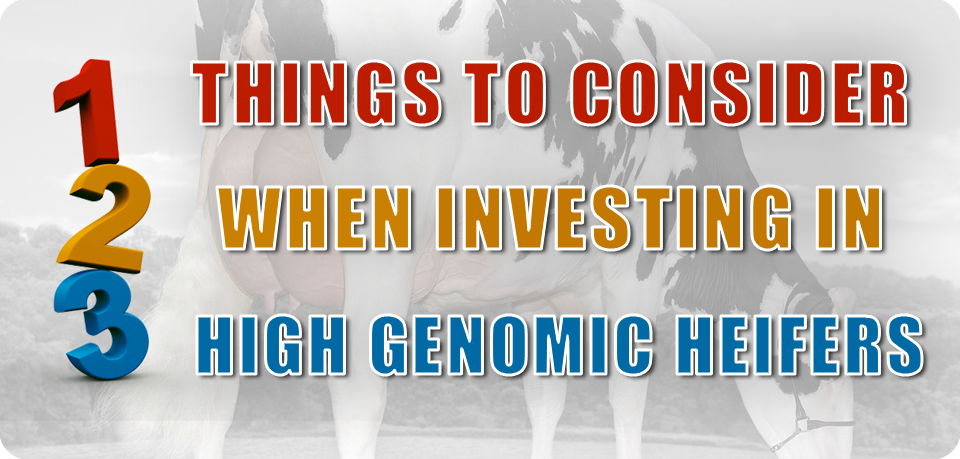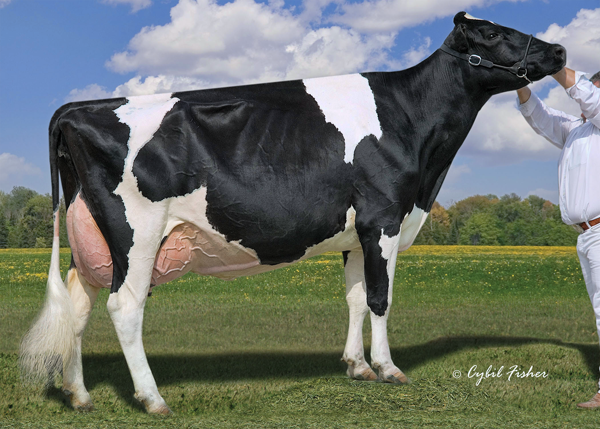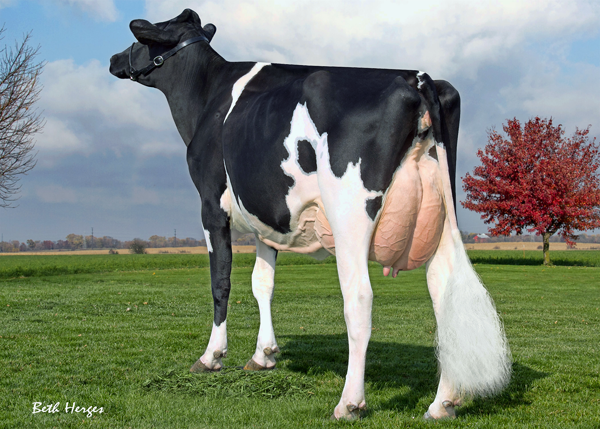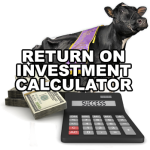Over the past year there have been prices in excess of $200,000 dollars paid for high indexing genomic heifers. For many breeders the changes that have resulted from the higher reliability that genomics provides has prompted them to invest “the farm” when it comes to buying into these potential cash cows. However, where to invest your money and which animals are worth it and which ones are not can be a very risky proposition. With that in mind, we compiled the following recommendations
Making the short list
While purchasing the #1 GLPI heifer may provide you with the greatest chance of getting a top cow, it is not a guarantee. In looking at the top 10 GLPI heifers, you notice an interesting range with most having an LPI of 3200 to 3400 points, but there are some that have GLPI’s of 2300 to 2500. You don’t have to buy into the very top of the list, but it does make it easier. Similar is true for the GTPI list as well. Though it’s highly recommended that you purchase a heifer who has DGV’s higher than her parent average.
There are also cow families that seem to be increase significantly generation after generation. One such family is the world renowned Lila Z family. While Lila Z herself is only 1165 GLPI, descendants are currently the #1 GLPI heifer and #1 GLPI bull. That is because generation after generation in this family seems to come to the top. This means that you can consider purchasing embryos or heifers from animals that have a GLPI of about 2900+ or 2000 GTPI if it is a family that has proven to produce much higher genomic progeny generation after generation. But be careful don’t assume that they all will. Check the family history.
Lesson: While purchasing at the top provides you with the greatest potential it is worth taking the time to see how your choice stands up generation after generation. Certain cow families like Lylehaven Lila Z and Ammon-Peachey Shauna seem to consistently put out high genomic descendants.
Never Under Estimate the Power of the Stack
When it comes to providing the greatest reliability for your investment, nothing compares to looking at the sire stack. One thing I have learned from your tried and true breeders is whether you are breeding for index or show cattle, nothing beats a good sire stack. Proven sires have a much higher reliability than genetic predictors do. A heifer’s sire stack is a great way to eliminate the hothouse effect (for more check out it’s in her genes…).
Lesson: When investing in dairy cattle it can often be buyer beware, a great way to mitigate the risk when purchasing into cow families that you are not familiar with is to look at their sire stack.
Flush History
Nothing can make or break an investment in genomic heifers like a poor flush history. You will make or break the bank depending on how well they flush. As the numbers show in What comes first the chicken or the egg? There really is no comparison when it comes to the most important factor in the profitability of your genetic and embryo programs. In fact, for each embryo flush where a donor is able to produce over 10 eggs per flush, you will typically see 24% greater return on your investment. It takes a rare case (1 in a million) to have a cow that flushes less than seven embryos per flush to be a profitable investment.
Lesson: as much as you spend a great deal of time researching the pedigree and looking at your potential purchase’s conformation, there really is nothing more important than her own and her family’s historical flush ability. Take the time to make sure that the animal you are considering will be able to flush 7+ embryos per time. If you are not sure they will, or there isn’t an available flush history on the family (strongly maternal) wait. Look for a new animal.
The Bullvine Bottom Line
With big dollars being spent on top genomic heifers, and even more breeders wanting to get into investing in top genomic heifers, taking the time to do your homework is very important. Investing in the correct families which have generation after generation of proven genetics can save you future headaches. Taking the time to make sure that they are able to produce significant numbers of embryos can make you a great deal of money. (To learn more about his read 6 Ways to Invest $50,000 in Dairy Cattle Genetics). Take the time to consider these factors and you will see the reward for it.
What has your experience been? Please share in comments box below.
Not sure how much to spend on that great 2 year old?
Want to make sure you are investing your money wisely?
Download our Dairy Cow Investment Calculator.





















Leave a Reply
You must be logged in to post a comment.